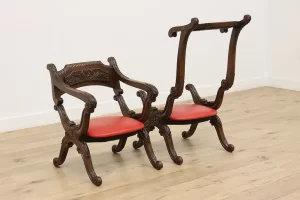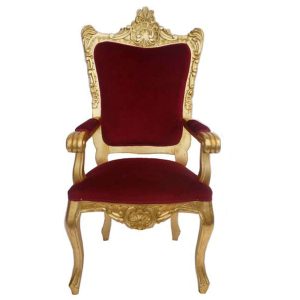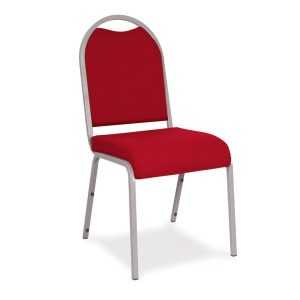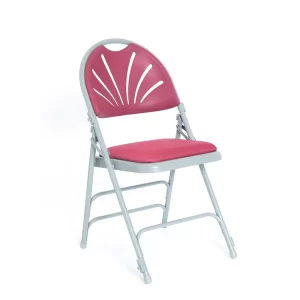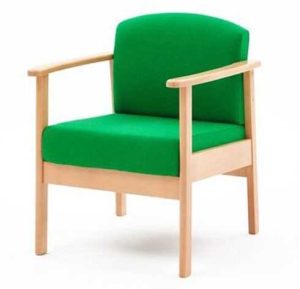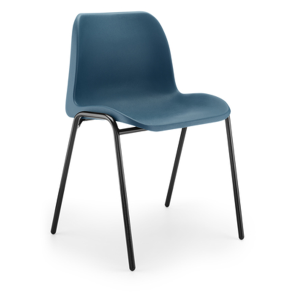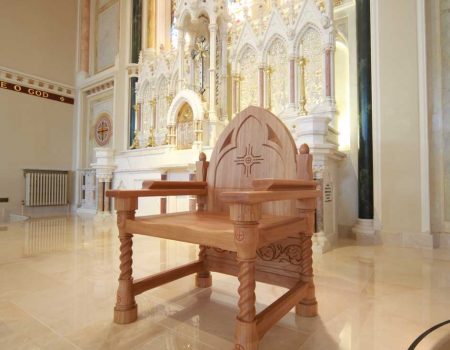
Exploring Historical Chapel Chair Designs: A Journey Through Time
Introduction
Church chairs have been an essential element of worship spaces for centuries, evolving in design, function, and comfort. This journey through time will explore the historical progression of church chair designs, reflecting the changing styles of worship and the needs of congregations. We will highlight specific brands from Winscombe Furniture, including the Nowystyl Vesta, Coronet High, Mogo Comfort Plus, Oxford Wooden, and HILLE General, showcasing how they embody both tradition and modern innovation in church wooden chairs.
Ancient Beginnings: The Origins of Church Seating
The history of church seating can be traced back to ancient times, where the earliest worship spaces often featured simple benches or stone seats. In these early communities, the emphasis was on communal worship, and seating was secondary to the act of gathering. The use of wooden chairs emerged as a significant advancement in church design, allowing for more flexibility and comfort.
As Christianity spread throughout Europe, the architectural style of churches became more elaborate, and so did the seating arrangements. Chairs began to take on more distinct designs, often reflecting the artistic styles of the time. The emphasis shifted from functionality to aesthetics, with intricate carvings and ornamentation becoming common in wooden chairs.
The Middle Ages: From Simplicity to Elaborate Design
During the Middle Ages, church architecture transformed with the introduction of Gothic design. This period saw the emergence of more ornate church chairs, often made of oak, featuring high backs and intricate carvings. These designs not only provided comfort but also conveyed the grandeur of the church.
Chapel chair became essential for accommodating larger congregations, as the number of worshippers increased. The evolution of church seating mirrored the changing dynamics of worship, with a growing emphasis on individual comfort within a communal setting. Chairs were often arranged in rows, allowing for better visibility of the altar and facilitating a more structured worship experience.
The Renaissance: A Return to Classical Forms
The Renaissance brought about a renewed interest in classical forms and symmetry, influencing church chair designs significantly. Wooden chairs were crafted with an emphasis on proportion and balance, often inspired by ancient Roman and Greek styles. This period saw the introduction of lighter, more elegant designs, allowing for easier movement and arrangement within the worship space.
Spotlight on Winscombe Furniture: The Nowystyl Vesta
One notable design from Winscombe Furniture is the Nowystyl Vesta. This chair combines modern aesthetics with traditional craftsmanship, featuring a sleek silhouette and ergonomic design. The Vesta is ideal for contemporary church settings, offering comfort and style while maintaining a sense of reverence.
The Baroque Era: Opulence and Extravagance
The Baroque period marked a time of opulence and grandeur in church architecture and seating. Church wooden seats from this era were often embellished with gilded accents, rich fabrics, and complex designs. The focus shifted towards creating an immersive worship experience, where the environment played a crucial role in the congregation’s spiritual journey.
The Coronet High: Elegance Meets Functionality
From Winscombe Furniture, the Coronet High chair exemplifies the elegance of this era. With its high back and luxurious upholstery, it offers both comfort and a touch of sophistication to any church setting. The Coronet High is perfect for creating a welcoming environment, reflecting the opulent spirit of its Baroque predecessors.
The 19th Century: Practicality and Functionality
As society progressed into the 19th century, church chair designs began to prioritise practicality and functionality. The Industrial Revolution introduced new manufacturing techniques, leading to mass production of church seating. Designs became simpler and more standardised, accommodating the needs of growing congregations without sacrificing comfort.
The Mogo Comfort Plus: Modern Comfort
The Mogo Comfort Plus from Winscombe Furniture is a prime example of modern innovation in church seating. Designed with comfort in mind, this chair features a padded seat and backrest, making it ideal for extended worship services. Its sleek design and durability reflect the contemporary needs of today’s congregations while honouring the tradition of wooden chairs.
The 20th Century: Minimalism and Flexibility
The 20th century brought about a shift towards minimalism in design, with an emphasis on flexibility and adaptability in worship spaces. Churches began to embrace multi-functional seating that could be easily rearranged for various services and events. This era saw the rise of stackable chairs and modular designs, allowing congregations to customise their worship environments.
The Oxford Wooden: Timeless Design
The Oxford Wooden chair from Winscombe Furniture embodies the essence of timeless design. Its classic wooden construction and stackable features make it a versatile choice for modern churches, combining aesthetics with practicality. The Oxford Wooden chair reflects the shift towards functional design while honouring the historical roots of church seating.
Modern Innovations: Blending Tradition with Contemporary Needs
In recent years, church chair designs have continued to evolve, blending traditional elements with contemporary needs. Today’s worship spaces often require versatile seating solutions that can accommodate a variety of events, from traditional services to community gatherings. This has led to innovative designs that prioritise comfort, durability, and style.
HILLE General: A Versatile Choice for Modern Worship
The HILLE General chair represents the pinnacle of modern church seating solutions. Its lightweight design and stackable features make it ideal for dynamic worship environments, while its ergonomic structure ensures comfort for all users. This chair exemplifies how contemporary designs can meet the demands of modern congregations while respecting the historical significance of church chairs.
21st Century
To meet today’s requirements Churches are now using chairs instead of pews to make their space more flexible and versatile for different events. Chairs offer greater comfort and support, which can make attending church services a more pleasant experience. The space in a modern church is often used for other activities other than celebrating the masses. It can host concerts, sermons, community meetings, and so many other activities.
Now in the 21st century this latest evolution in church seating encompasses wooden, metal, folding and stacking framed chairs. These varied forms of seating are perfect for the modern church that is expanding its range of activities that it now hosts.
This evolution has returned the church back to its original role as a multifunctional community centre as it was back in the middle ages.
Final Thoughts
Throughout history, church chair designs have reflected the evolving styles of worship and the needs of congregations. From simple wooden benches to modern ergonomic designs, each era has contributed to the rich tapestry of church seating.
With their diverse offerings, brands like Winscombe Furniture continue to honour this legacy while pushing the boundaries of innovation in church wooden chairs. As we look to the future, it is clear that the journey of church chair design will continue to evolve, reflecting the changing dynamics of worship and community life.
In exploring these historical designs, we gain a deeper appreciation for the role of chapel chairs in shaping our worship experiences, reminding us of the enduring connection between design and faith.

